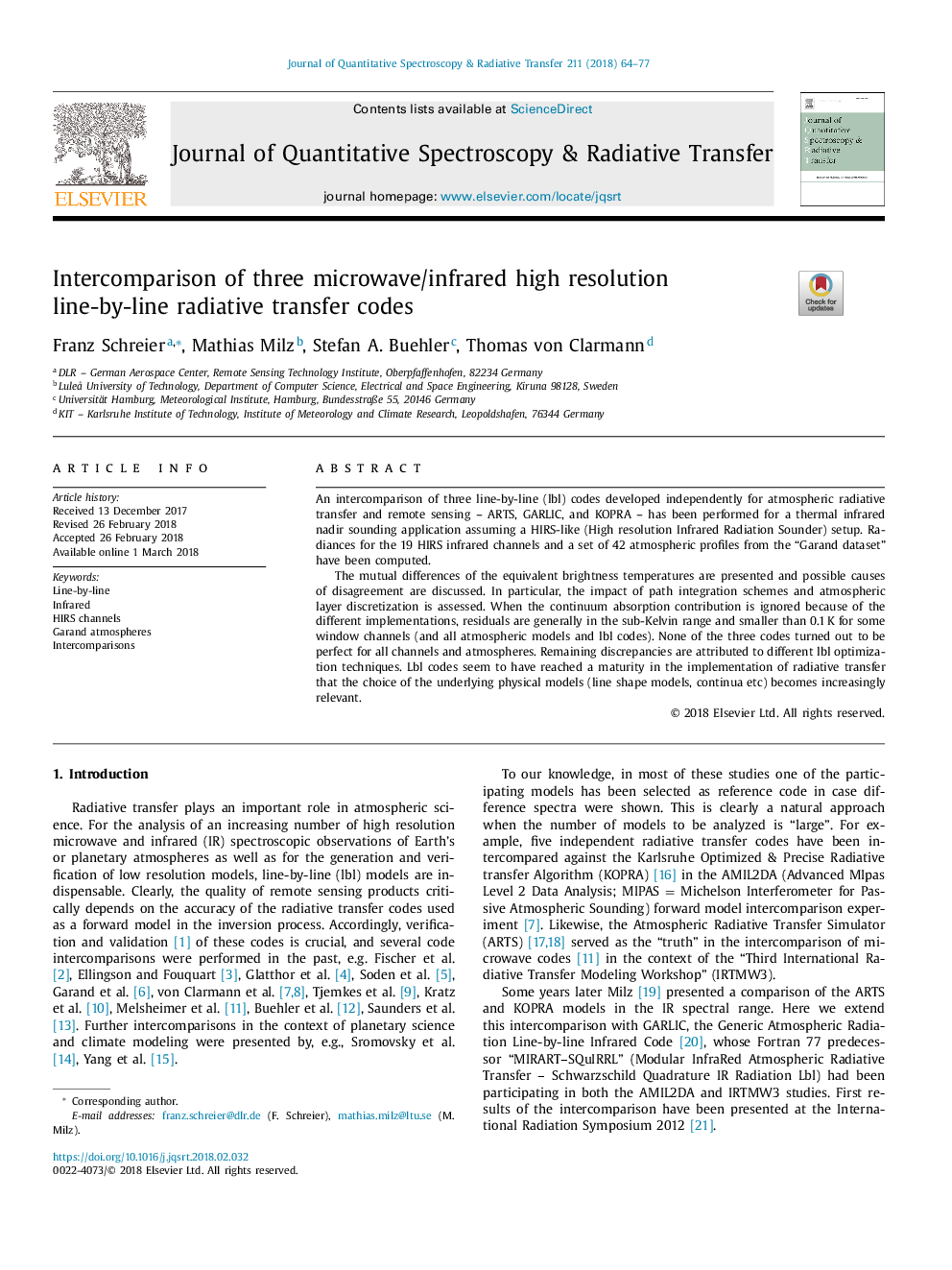| Article ID | Journal | Published Year | Pages | File Type |
|---|---|---|---|---|
| 7846016 | Journal of Quantitative Spectroscopy and Radiative Transfer | 2018 | 14 Pages |
Abstract
The mutual differences of the equivalent brightness temperatures are presented and possible causes of disagreement are discussed. In particular, the impact of path integration schemes and atmospheric layer discretization is assessed. When the continuum absorption contribution is ignored because of the different implementations, residuals are generally in the sub-Kelvin range and smaller than 0.1âK for some window channels (and all atmospheric models and lbl codes). None of the three codes turned out to be perfect for all channels and atmospheres. Remaining discrepancies are attributed to different lbl optimization techniques. Lbl codes seem to have reached a maturity in the implementation of radiative transfer that the choice of the underlying physical models (line shape models, continua etc) becomes increasingly relevant.
Keywords
Related Topics
Physical Sciences and Engineering
Chemistry
Spectroscopy
Authors
Franz Schreier, Mathias Milz, Stefan A. Buehler, Thomas von Clarmann,
